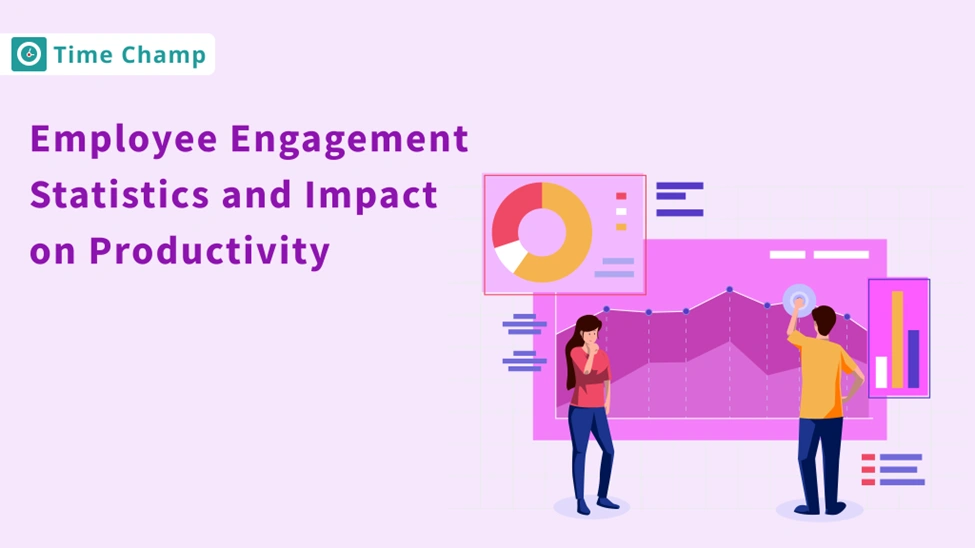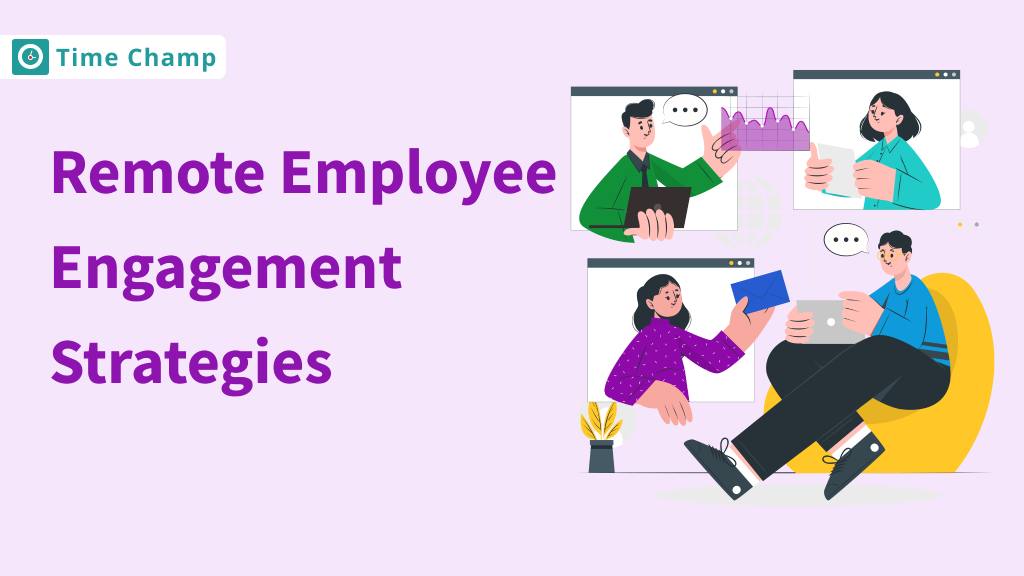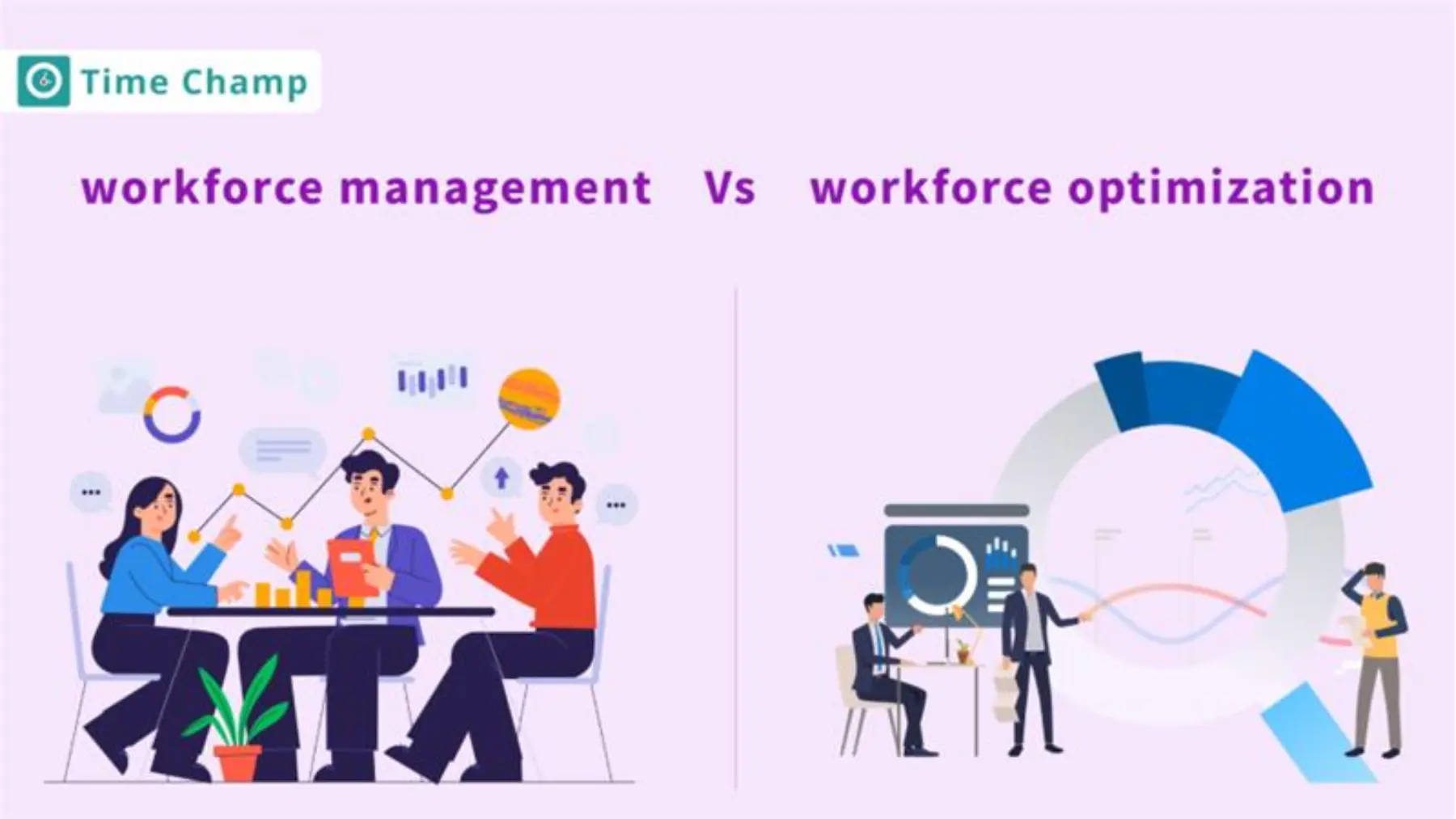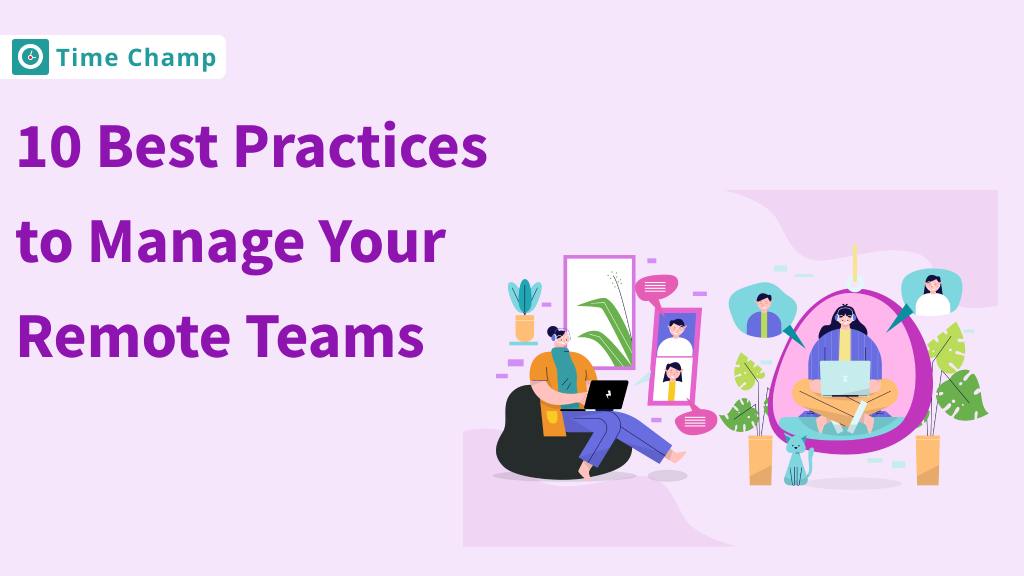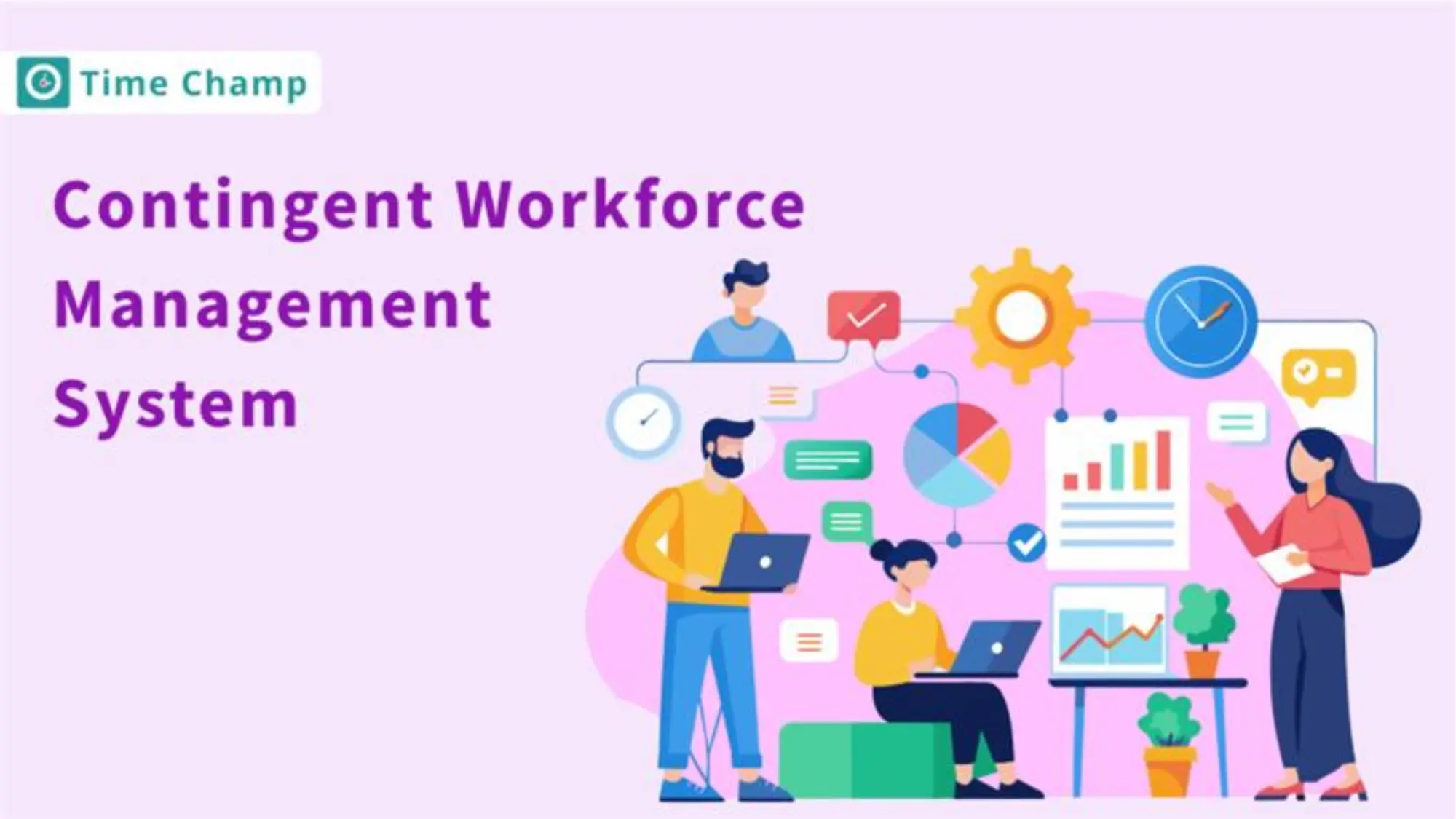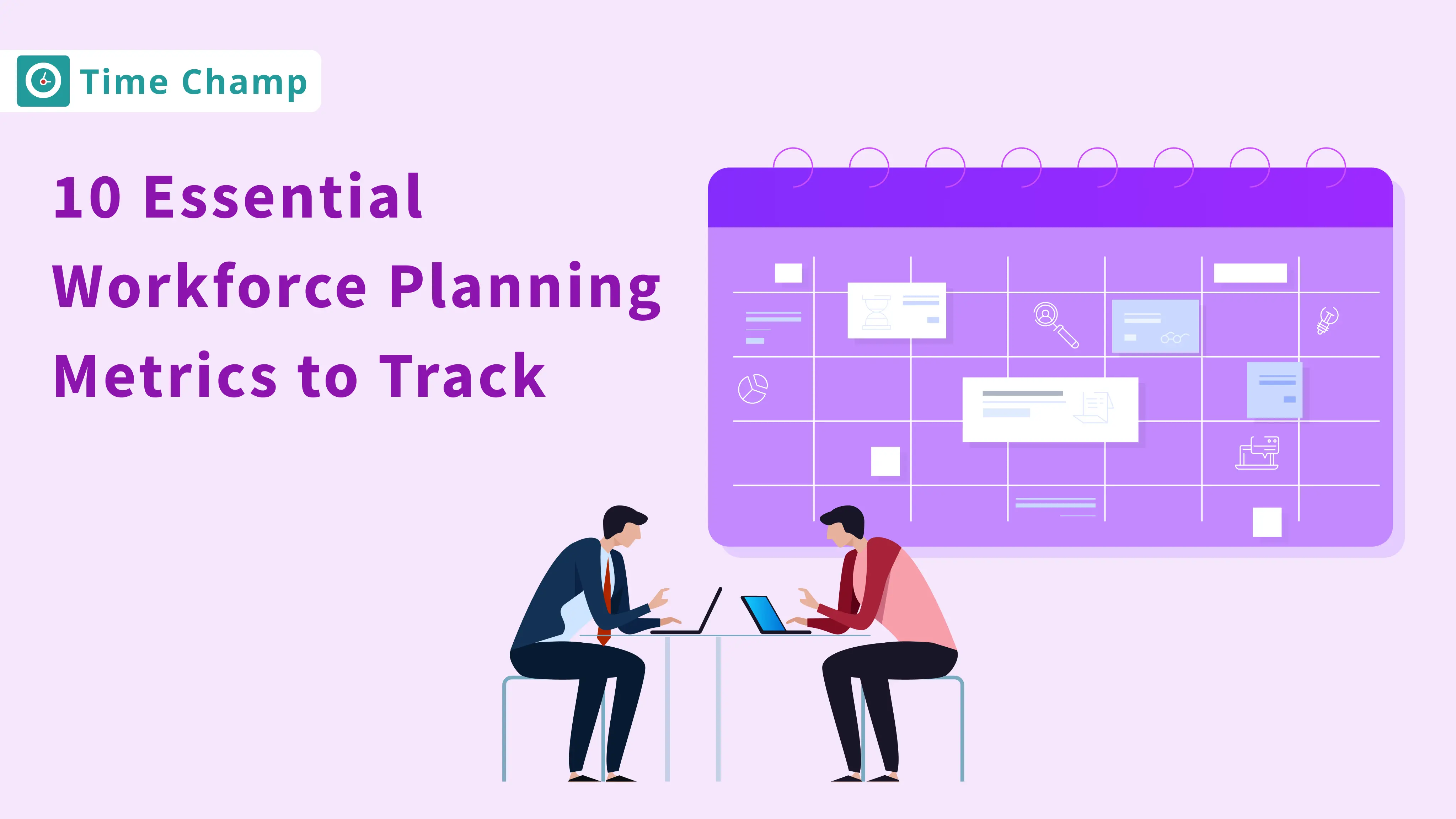Workforce engagement management is simply a set of tools and procedures that help you create a happy, engaged, and thriving workforce that is always high on productivity and exceeds performance limits every time.
In this guide, I will walk you through everything you need to know about workforce engagement management, so let’s get started.
What Is Workforce Engagement Management (WEM)?
Workforce engagement management (WEM) is a strategic approach of using tools, processes, and analytics to keep employees engaged, productive, and always aligned with your business goals. WEM is more than traditional workforce management. It focuses on employee experience through scheduling, performance tracking , training, quality monitoring, and feedback. The end goal is to create a work environment where employees feel valued and stay motivated while operations run smoothly.
WEM combines smart insights with automation and real-time monitoring to improve both employee engagement and overall efficiency. Mostly businesses use it to balance workloads, reduce burnout, and improve customer experience, whether in contact centres, remote teams, or large enterprises, making it an essential strategy for building a high-performing workforce.
Is WEM the Same as WFO?
No, workforce engagement management is not the same as workforce optimisation. In fact, WEM is a bit more advanced, and it covers evolving concepts that shift the focus from operational efficiencies of WFO to a more people-oriented approach, emphasising employee well-being and satisfaction as the sole drivers of performance and customer experience.
While workforce optimisation focuses on metrics and operational control, workforce engagement management prioritises building a positive workplace, improving retention, and driving productivity by actively engaging and supporting employees.
Why is WEM Important in Contact Centres?
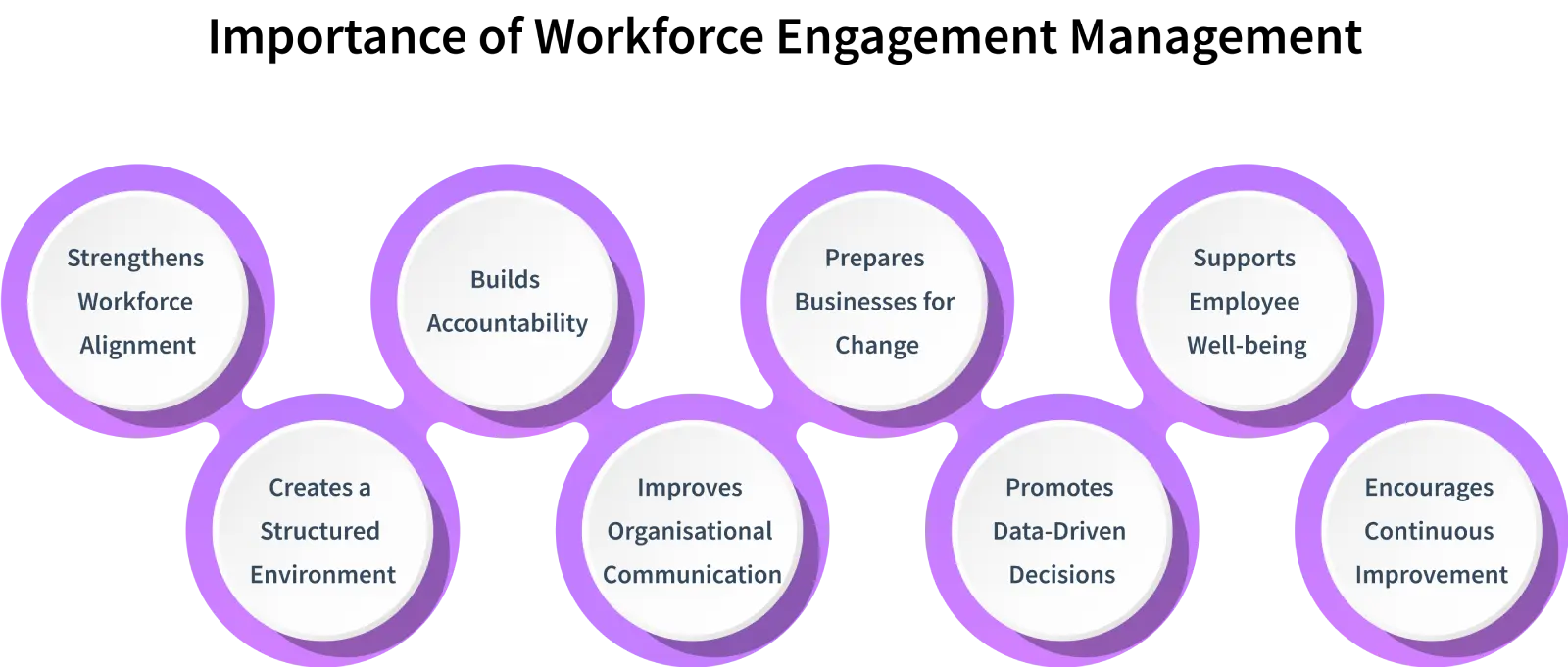
Workforce engagement management plays a big role in contact centres, it helps a lot in retaining employees and boosting their morale, which in turn increases their performance, productivity, and customer satisfaction .
It also increases their performance by keeping them engaged.
In fact, a study by Gallup says engaged teams perform better in certain key performance metrics, like:
- 78% reduction in absenteeism
- 21% lower turnover in high-turnover organisations
- 51% lower turnover in low-turnover organisations
- 28% drop in theft incidents
- 63% fewer workplace safety issues
- 32% decrease in quality defects
Here are more reasons why WEM is important:
1. Strengthens Workforce Alignment: WEM makes sure that every employee understands your company’s mission and how their work is contributing to it, building a shared sense of purpose.
2. Creates a Structured Work Environment: It brings proper order to all the workforce activities, providing a clear structure for scheduling, performance monitoring, and task prioritisation.
3. Builds Accountability Across Teams: It helps employees own their performance, deliver better customer service, and achieve outcomes with clear responsibilities and transparent tracking.
4. Improves Organisational Communication: WEM ensures communication and feedback work in a centralised manner, which in turn enhances open and collaborative teamwork and minimises misunderstandings.
5. Prepares Businesses for Change: WEM helps your organisation to adjust to market shifts and changes in workloads without losing productivity or team morale.
6. Promotes Data-Driven Decisions: It helps your managers to make evidence-based decisions by gathering and analysing workforce data.
7. Supports Employee Well-being: It helps you recognise the symptoms of burnout at the early stages, which creates an efficient and healthy working environment .
8. Encourages a Culture of Continuous Improvement: WEM allows feedback and skill development to become a continuous process, resulting in the long-term growth of employees and business.
What Are the Key Components of Workforce Engagement Management?
Now you know how important workforce engagement is, and managing it is even more important. Now, let’s go ahead and talk about the key components that are needed for an absolutely effective WEM. Make sure you have all of these components in your WEM plan:
1. Communication Tools
Establish open and transparent lines of communication that keep all on the same track. Open communication between employees, managers, and teams will lead to trust and reduced misunderstanding.
2. Performance Management
Manage your staff performance easily, all you need to do is set specific goals, monitor the progress, and provide constructive feedback. Setting up a fair process allows employees to become better and reach their potential.
3. Learning and Development
Let your employees learn first, provide them opportunities and build their careers within your company. This will help your employees sharpen their skills and also boost retention, along with loyalty.

4. Employee Feedback and Recognition
Regular feedback really matters, and it helps a lot in recognising genuine workers, which in turn leads to increased employee morale. Appreciations for the hard work and contributions keep employees always motivated and well-engaged.
5. Analytics and Reporting
Leverage data to understand engagement levels and spot areas that need attention. Measuring results ensures every workforce initiative drives real impact.
6. Workforce Analytics
Use a workforce analytics tool like Time Champ that provides real-time data and insights to reveal productivity trends, employee behaviour, and their level of engagement. This will help you make better decisions that will be beneficial to both your workforce and the business.
7. Employee Engagement Tools
Create polls, surveys, and feedback forms, which give employees a voice and they feel heard when their needs are fulfilled. Many organisations have already built trust using such mediums to know their staff's needs, and it even strengthens the connection between staff and management.
What are the Benefits of Workforce Engagement Management?
Workforce engagement management comes with its own set of benefits that help you create a healthy workplace.
1. Higher Productivity Levels
Engaged employees naturally contribute more. With proper WEM tools and strategies, businesses can maximise overall productive time while minimising idle periods.
2. Reduces Absenteeism and Attrition
WEM helps reduce unplanned absences and employee turnover rates, which in turn helps you understand your employees’ needs and gives you a wonderful chance to improve work culture .
3. Better Employee Experience
It gives employees clarity, recognition, and opportunities to grow, leading to a more positive and fulfilling work environment.
4. Cost Optimisation
WEM highlights where time and resources are being underutilised, allowing your business to cut unnecessary costs and improve return on investment (ROI).
5. Improves Collaboration
Good communication bridges all the gaps, and when your communication channels are streamlined, teamwork improves, and projects move forward faster with almost zero delays.
6. Enhances Customer Satisfaction
Do you know what engaged employees bring to the table? Excellent service and quality results, which ultimately impact the overall customer experience.
How Does WEM Enhance Contact Centre Productivity?
Contact centres run on people, process and technology. Workforce engagement management (WEM) sits at the intersection of those three: it combines forecasting & scheduling, performance management, coaching, employee communications, quality monitoring, and analytics into a single strategy and platform. When implemented well, WEM lifts productivity by aligning agent capacity with demand, reducing avoidable idle time and attrition, improving first-contact resolution (FCR) and raising customer satisfaction, all while supporting agent wellbeing so performance is sustainable.
1) Right People, Right Time: Forecasting & Intraday Scheduling
Accurate prediction and compliance with schedules are the backbone of productivity. WEM tools use historical volumes, shrinkage and real-time adherence to place agents where they’re needed, reducing overstaffing (wasted payroll) and understaffing (longer wait times and stressed agents). Experts recommend keeping occupancy within a healthy range, for example, telecom contact centers aim for around 80–90% . Workforce Engagement Management (WEM) helps maintain occupancy in that ideal range.
Productivity Effect: Fewer abandoned calls, shorter wait times, improved service level and CSAT.
2) Improves Quality and FCR Through Coaching and Quality Monitoring
WEM centralises quality monitoring (scorecards, screen recording, interaction evaluation) and links it to personalised coaching. Instead of sporadic, subjective feedback, agents get timely, data-driven coaching tied to real interactions, which raises first contact resolution (FCR) and reduces repeat contacts. Higher FCR reduces total handle time per issue across the operation, a direct productivity gain.
A Gallup Research shows that improving engagement and manager coaching correlates with better performance across teams.
3) Reduces Attrition and Its Huge Productivity Cost
Contact centres in general face high attrition. WEM helps in reducing attrition and recruitment costs caused by high turnover. Historic industry figures show contact centre attrition commonly in the 30-40% range , depending on region and year. WEM programs focused on engagement, recognition and career pathways reduce attrition and the hidden productivity drain that follows.
4) Real-time Analytics and Intraday Interventions
Most of the WEM platforms provide dashboards and alerts (shrinkage spikes, adherence drops, volume surges). So that you can intervene in real time, reallocate staff, offer overtime, or open coach micro-sessions. Those intraday actions prevent small problems from turning into major service-level misses. DMG and other market reports show WEM adoption rising because organisations see measurable improvements from these real-time capabilities.
5) Recognition and Motivation
Recognition and transparent scorecards create friendly competition and clarity, both of which are well-known drivers of engagement. Gallup’s research links higher engagement levels to higher productivity and lower absenteeism. WEM makes engagement measurable and actionable at the team level.
6) Better Workforce Planning and Skill Optimisation
WEM solutions help to detect skills gaps and suggest training to support smarter routing and the utilisation of skilled call centre agents on complex queries. When skill-based routing is combined with capacity planning, you can handle complexity more efficiently and improve average handle time (AHT) without sacrificing call quality.
7) Agent Wellbeing and Sustainable Productivity
WEM properly monitors and gives your managers accurate data to prevent agent burnout. For example, Gallup’s analyses show that manager’s engagement heavily influences the team engagement and productivity. WEM provides managers with the tools to act on that.
How to Choose the Right Workforce Engagement Management Software
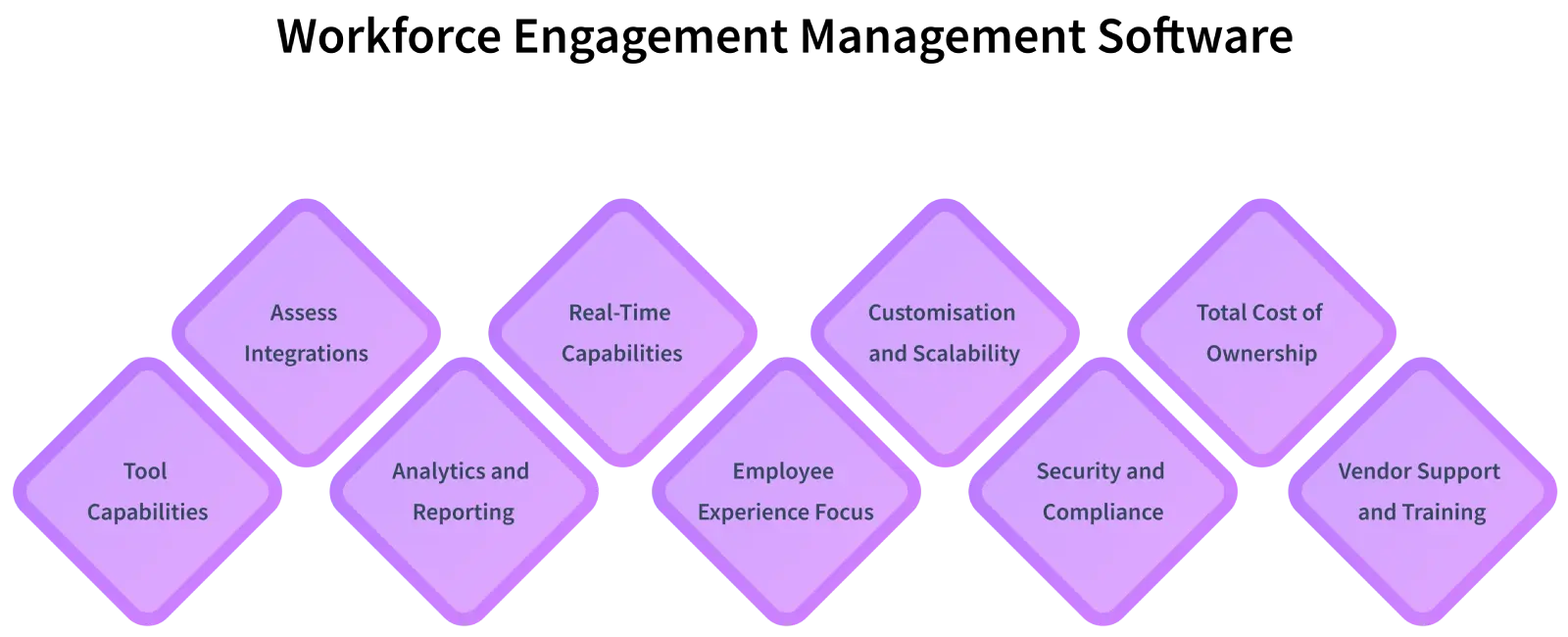
A tool must have all the features a company needs, I get it, but the tool you choose should also be able to solve the right problems for your contact centre. Here’s what you need to look for to ensure that:
1. Match Software Capabilities with Your Pain Points
Start by identifying your current challenges. If you are struggling with high attrition, poor schedule adherence, or long handling times, then choose a tool that directly addresses these issues. For example, if engagement is your biggest concern, then look for strong recognition, feedback, and coaching tools instead of over-investing in forecasting modules you may not need.
2. Integration with Existing Systems
Make sure the platform you choose easily integrates with your ACD, CRM, HRIS, and quality monitoring tools. If the tool fails to integrate, then it will likely create cluttered data and manual work that defeats the whole purpose of automation. Always ask the support people about API availability and plug-and-play connectors to ensure a smooth flow of data.
3. Depth of Analytics and Reporting
A good WEM software should go way beyond mere surface-level dashboards. Look for solutions that offer productivity trend analysis, root-cause insights, and predictive metrics (like attrition risk scores). This helps your managers not only react but plan ahead, reducing unwanted surprises during peak seasons.
4. Real-Time Capabilities
Productivity improvements come from acting quickly in difficult situations. Check whether the tool provides real-time monitoring, live alerts, and intraday re-forecasting. Without these, your managers may only discover problems after a customer gets dissatisfied with the service.
5. Employee Experience Focus
Since WEM is about engagement, make sure the platform is user-friendly for agents as well, not only for managers. Features like access to a mobile schedule, shift bidding, real-time feedback, and gamification promote employee participation and reduce adoption resistance.
6. Customisation and Scalability
Your contact centre might scale, so add new channels or shift to hybrid work models. Pick a software that lets you customise dashboards, workflows, and KPIs, and one that can scale up as your team expands, without needing a full system replacement later.
7. Security and Compliance
WEM platforms handle sensitive data like performance scores, attendance, and sometimes even recordings. Confirm that the tool you are going to choose follows strict data security standards like ISO 27001, SOC 2 and allows role-based access so your information always stays protected.
8. Total Cost of Ownership (TCO)
Don’t just look at the subscription fees. Evaluate setup costs, training, integration fees, and ongoing support. The right tool for you is one that delivers measurable ROI by cutting unwanted operational waste, improving employee engagement , and reducing attrition rates, not just the cheapest option available.
9. Vendor Support and Training
And finally, check how strong the software’s support network is. Does it offer onboarding workshops, live chat, or dedicated success managers? Good support ensures your team actually uses the platform to its full potential and sees results faster.
How Time Champ Helps You Keep Your Employees Engaged
Time Champ is an all-in-one workforce management software that gives you accurate insights into employee’s work and productivity patterns. It also provides deep workforce analytics reports so that you can create better workforce engagement strategies and ensure a healthy workplace. Here are more features from Time Champ that help you in WEM:
Real-Time Visibility: Lets you view employee activities, app usage, and website access during work hours, all in a single centralised dashboard.
Project & Task Insights: Tracks task progress and project timelines to keep everyone aligned and focused on their goals.
Attendance & Timesheet Automation: Eliminates manual errors with automated attendance and accurate work-hour logging.
Detailed Analytics & Reports: Offers easy-to-read productivity trends, utilisation metrics, and performance heatmaps to help you make smarter decisions.
Idle Time & Overload Alerts: Detects overwork or inactivity early to maintain a healthy balance between work and life, and even helps prevent burnout.
Employee Self-Dashboards: Lets your employees see their own data to boost their accountability and self-improvement.
Secure Data Handling: Monitors activity without invading employee privacy, ensuring compliance with your workplace policies.
Seamless Integrations: Connects with your project management , payroll, and HR tools to keep everything in sync.
Conclusion
Before wrapping up, I just want to repeat the important stuff once: workforce engagement management brings your workplace a positive energy that helps your teams thrive and work peacefully, it brings you structure and helps you recognise and reward employees purely based on their work. All you need to do is choose the right tool for this job, monitor continuously, identify issues and solve them.
Frequently Asked Questions
Yes, WEM identifies early signs of disengagement and allows managers to act before employees decide to leave. By improving communication, recognition, and workload balance, WEM significantly reduces attrition and recruitment costs.
Contact centres, IT services, BPOs, healthcare, and any business with large or distributed teams benefit greatly from WEM. However, any organisation looking to improve productivity and engagement can adopt WEM.
Start by assessing your current challenges and identifying gaps in engagement or productivity. Choose a WEM solution that matches those needs, train your managers, and roll it out gradually for smoother adoption.
Good WEM tools respect privacy by collecting only relevant work data and providing transparency about what is being monitored. Most platforms also allow role-based access to keep data secure and compliant.
Yes, modern WEM tools use AI for predictive analytics, anomaly detection, and smart scheduling. Automation reduces manual effort and allows managers to focus on coaching and strategy.




